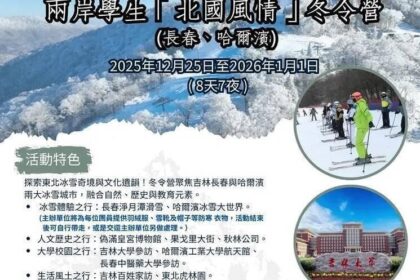A hidden 200 billion pipeline into American tech and industry
Over a quarter century, Chinese state banks quietly supplied about 200 billion dollars to US businesses by routing funds through shell companies and offshore hubs. Money flowed from lenders directed by Beijing to entities registered in the Cayman Islands, Bermuda, and Delaware, then into deals linked to robotics, semiconductors, biotechnology, and critical minerals. The pattern stayed largely out of view because the loans were structured to look like private, arm’s length financing and often recorded under non Chinese names.
The findings, compiled by the AidData research lab at the College of William and Mary, depict a sophisticated web that stretched well beyond developing markets. The United States emerged as the largest single destination for these loans, with allied economies like the United Kingdom, Germany, Australia, and the Netherlands also in the mix. In many deals, Chinese financing helped buyers acquire stakes in strategic companies or secure rights to key assets that support modern defense and telecom systems.
The scale surprised many policy watchers. While Washington spent years warning partners about opaque lending from China, the US itself absorbed the biggest share. As scrutiny increased, Chinese lenders did not retreat. They adjusted by issuing credit from overseas branches and by lending to offshore affiliates and special purpose vehicles. That approach obscured the origin of the money and made it harder for regulators to see who truly stood behind a loan.
Researchers say the pattern signals a shift in the use of Chinese state credit. The focus moved from traditional development lending toward gaining influence over chokepoints in advanced manufacturing and technology supply chains. The target list included critical minerals, chipmaking equipment, process know how, and firms with sensitive data.
How the money moved unseen
The financing often ran through layers of holding companies and trusts that masked beneficial ownership. Loans originated from large Chinese policy banks and commercial giants, but the borrower of record might be an affiliate incorporated in a secrecy jurisdiction. In some cases, the credit resembled vendor financing that eased a cross border acquisition by a buyer tied to China. In others, it was a direct corporate loan to an American or European firm, recorded as private credit with no obvious Chinese footprint in public databases.
Offshore branches created another twist. Chinese lenders expanded their global footprints by opening more than one hundred foreign branches and subsidiaries. Those outposts issued loans in dollars or euros to offshore borrowers, which then injected the funds into target companies. The result looked like a normal international loan, not a geopolitical move. That distinction mattered because traditional foreign investment screens tend to focus on equity control, not debt.
What researchers uncovered
AidData examined regulatory filings, loan agreements, and corporate disclosures across more than two hundred countries to map this hidden credit. The researchers conclude that China issued more than 2 trillion dollars in state backed loans worldwide between 2000 and 2023. A growing share inside wealthy economies pointed at strategic sectors. The pattern accelerated after mid decade industrial policies in Beijing put a premium on chips, robotics, and advanced materials.
Brad Parks, the executive director of AidData, said the research shows long term planning behind the network of loans and acquisitions that regulators often saw only after the fact.
“China was playing chess while the rest of us were playing checkers.”
Parsing ownership is hard when transactions are cloaked by shell structures, confidentiality clauses, and mislabeling that treats state directed credit as private finance. Even so, a consistent signal appears in the data. The deals frequently involved assets that matter for national security, from rare earth processing to semiconductor design and packaging.
Which sectors were targeted and why
Several sectors stand out across the US and allied markets.
Semiconductors sit at the top of the list. Chips enable everything from stealth systems and smart weapons to cloud computing and next generation telecom. Acquiring stakes in chip designers, equipment makers, or packaging facilities can unlock know how and supply access. Robotics is another focal point. Advanced industrial robots, machine vision, and precision actuators determine the productivity of factories that build aircraft, autos, and electronics. Biotechnology and medical devices add dual use concerns. Genomic analysis, bioprocessing, and high end imaging can have both civilian and defense applications.
Critical minerals round out the picture. Battery inputs, rare earths, and specialty alloys are essential to missile guidance, radar, and secure communications. Control over mining rights, processing capacity, and refining technology gives any state the ability to tilt supply in a crisis. Chinese state lenders repeatedly backed deals tied to these inputs or to the technology needed to process them.
Industrial policy set the direction. Plans in Beijing that prioritized advancement in ten strategic industries placed chips and robotics front and center. Military civilian fusion, a concept that blends civilian tech progress into defense capability, reinforced the desire to obtain overseas technology, talent, and tooling, even if ownership was indirect.
Examples that set off alarms
Some transactions became case studies for national security reviews. In 2017, the US blocked the attempted sale of Lattice Semiconductor to a private equity fund backed by Chinese capital after a review by the Committee on Foreign Investment in the United States (CFIUS). In the United Kingdom, the government ordered a Chinese owned firm to divest its stake in a major semiconductor plant in 2022 on security grounds. In Germany, policymakers toughened reviews following high profile attempts to acquire advanced machinery and chip assets.
The lending trail described by researchers includes deals where offshore financing enabled acquisitions that looked routine at first glance. Examples cited in the research include a loan to acquire a US insurer with clients inside the intelligence community and financing tied to a Michigan robotics company. In some cases, authorities later pushed for divestment when the ultimate ownership became known.
William Henagan, a former White House investment adviser, framed the stakes in stark terms, arguing that control over critical products can shape the outcome of conflicts and the resilience of an economy.
“Wars could be won or lost based on control of products essential to the economy.”
The pattern is not limited to one or two headline cases. It is a repeated use of credit to gain influence over strategic assets without always triggering the most visible regulatory alarms. Even when a deal does not hand over formal control, debt can come with covenants, information rights, or options that reduce a company’s freedom to act.
How US screening tried to keep pace
Washington expanded its tool kit across the past decade. CFIUS, the interagency group that reviews foreign acquisitions for security risks, gained new powers under the 2018 law known as FIRRMA. Those changes let the government review some non controlling investments in sensitive tech and certain real estate near military sites. Separate reviews by the group informally known as Team Telecom look at cross border telecom transactions. The Commerce Department’s Entity List restricts exports to companies tied to military or surveillance activities. In 2023, an executive order began to set guardrails for outbound investment from the US into certain Chinese tech areas.
Debt is harder to police. Many screening regimes center on equity control or board influence. A loan, by contrast, can fly under the radar if the lender is an offshore branch of a Chinese bank or an affiliate with an innocuous name. That form of exposure can still create pressure if a borrower relies on ongoing credit or faces lender covenants that touch operations, information sharing, or supply agreements.
Scott Nathan, who previously led the US International Development Finance Corporation, cautioned that opaque transactions make it difficult for governments and the public to get a complete view of risk.
“The lack of transparency, and the lengths taken to obscure where the money comes from, make it very hard to see the whole picture.”
Regulators have tried to fill gaps with stronger disclosure and by coordinating across agencies. Companies have adapted by running deeper due diligence on their capital providers. Even so, researchers say Chinese lenders have kept pace by shifting more activity to overseas branches and by using lending structures that resemble Western private credit.
Allies confront the same playbook
European and Asia Pacific partners faced similar patterns. The European Union put an investment screening framework in place in 2020 to coordinate reviews across member states. The United Kingdom created a new national security screening regime that can retroactively call in deals. Germany blocked the acquisition of a high end machine tool company in 2018 and tightened scrutiny of chip and industrial control targets. Australia has sharpened rules on critical infrastructure and resources.
Countries have also looked at foreign control in supply chains beyond final assembly. Control of chemistry, wafer fabrication steps, packaging, or specialty metals can give an investor leverage even if end products are made elsewhere. The Netherlands saw concerns focus on a Chinese owned company with a large stake in a British semiconductor plant. That case became a touchstone for how to treat cross border corporate chains that pass through third countries.
Coordination has improved, but gaps remain. Deals structured as debt can avoid mandatory notification. Offshore vehicles can create uncertainty about who stands behind a lender. The cases point to the need for clear definitions of effective control and for information sharing about beneficial ownership in real time.
Why debt became the instrument of choice
Equity purchases deliver control, which triggers reviews. Debt is a quieter tool. It can bring access without headlines. Three features explain its appeal in this context.
First, debt can be layered. A Chinese state bank lends to an offshore affiliate, which lends to a bidder or target company. Public filings list a shell as the lender, not the state bank. Second, debt can convert. Convertible notes and warrants can turn into equity later, often below review thresholds. Third, debt can bind. Financial covenants, information rights, and consent requirements give a lender influence over budgets, technology transfers, and supply contracts.
This is not always nefarious. Private credit funds and banks worldwide use the same tools. The difference here is direction by a state actor that pursues strategic goals. When the lender is guided by government industrial and security policy, normal financing techniques can become channels for technology transfer or supply chain control.
What companies should watch
Boards and management teams can reduce risk without cutting off all foreign capital. The most useful steps are often basic disciplines applied with more rigor to lenders and investors that could be tied to a foreign state.
- Map the capital stack. Know every lender, affiliate, and guarantor behind each loan, not just the immediate counterparty.
- Trace beneficial ownership. Require certifications that identify the ultimate owners and any state ties, and keep that data current.
- Stress test covenants. Flag terms that grant information rights, consent over tech transfers, or options that could convert into control.
- Update security reviews. Treat major loans from offshore entities like you would a new investor in a sensitive business line.
- Segment data. Limit lender access to sensitive technical information unless required by law or contract, and document every access right.
- Coordinate with counsel early. Ask whether a financing or acquisition could raise CFIUS or export control concerns even if no equity changes hands.
Lenders that are independent and transparent can still be valuable partners. The challenge is to separate normal private credit from state directed financing that pursues strategic aims unrelated to the borrower’s commercial health.
Key Points
- AidData reports about 200 billion dollars in loans from Chinese state banks to US businesses over 25 years, often routed through shell companies in offshore jurisdictions.
- The United States is the largest recipient of this hidden credit, with allied economies like the UK, Germany, Australia, and the Netherlands also targeted.
- Loans focused on sensitive sectors, including semiconductors, robotics, biotechnology, and critical minerals used in defense and telecom systems.
- Researchers estimate China issued more than 2 trillion dollars in state backed loans worldwide from 2000 to 2023.
- Debt structures and offshore branches let Chinese lenders mask their role, making the money appear to be private financing.
- US and UK authorities have blocked or unwound deals tied to chips and other strategic assets when state links emerged.
- CFIUS powers expanded under FIRRMA, but debt often falls outside traditional control based review triggers.
- Experts warn that opaque lending can create hidden influence over technology and supply chains, prompting calls for tighter disclosure and screening.












